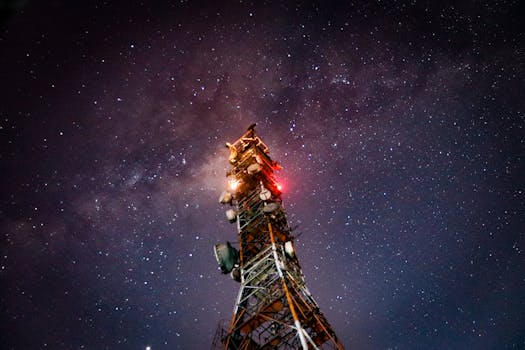
Starlink: Revolutionizing Global Internet Connectivity with Satellite Technology
Starlink is a satellite constellation developed by SpaceX, aiming to provide high-speed, low-latency internet connectivity worldwide, bridging the digital divide and transforming the way we communicate. With its cutting-edge technology, Starlink is poised to revolutionize the telecommunications industry, enabling seamless connectivity in even the most remote and underserved areas.
Introduction to Starlink
Starlink is a constellation of low-Earth orbit (LEO) satellites, designed to provide internet connectivity to users around the globe. The project was announced by Elon Musk in 2015, with the goal of creating a network of satellites that could offer fast and reliable internet access to anyone, anywhere in the world. Since then, SpaceX has launched numerous satellites, with over 2,000 currently in orbit, and plans to deploy thousands more in the coming years.
How Starlink Works
Starlink uses a combination of advanced technologies to provide high-speed internet connectivity. The satellites are equipped with Hall effect thrusters, which enable them to maintain their position and orbit. The user terminals, also known as dishes, communicate with the satellites, transmitting and receiving data. The system uses the Ku and Ka frequency bands to provide high-bandwidth connectivity, with speeds of up to 1 Gbps. The low latency of the system, which is around 20-30 milliseconds, makes it suitable for real-time applications such as online gaming and video conferencing.
Impact and Applications of Starlink
Starlink has the potential to transform the way we live, work, and communicate. It can provide internet access to remote and underserved communities, bridging the digital divide and enabling access to essential services such as education, healthcare, and finance. Starlink can also enable IoT applications, such as smart farming, transportation, and energy management, by providing reliable and low-latency connectivity. Additionally, it can support emergency response and disaster recovery efforts, providing critical communication infrastructure when traditional networks are unavailable.
Challenges and Future Developments
While Starlink has made significant progress, there are still challenges to be addressed. One of the main concerns is the potential for space debris, as the large number of satellites in low-Earth orbit can increase the risk of collisions. SpaceX is working to mitigate this risk by designing its satellites to deorbit and burn up in the atmosphere at the end of their lifespan. Another challenge is the cost of the user terminals, which can be prohibitively expensive for some users. However, SpaceX is working to reduce the cost of the terminals, making them more accessible to a wider range of users.






